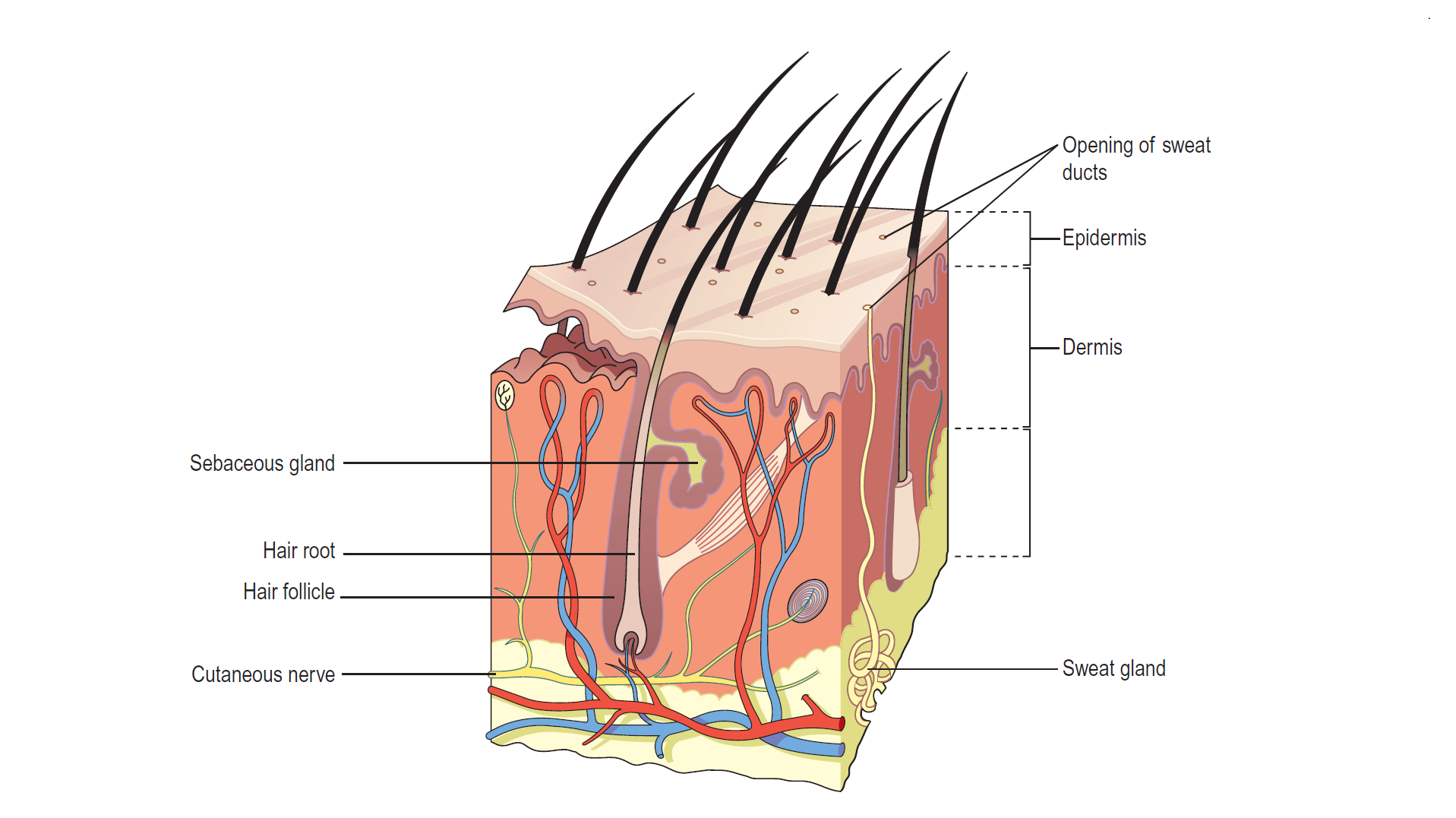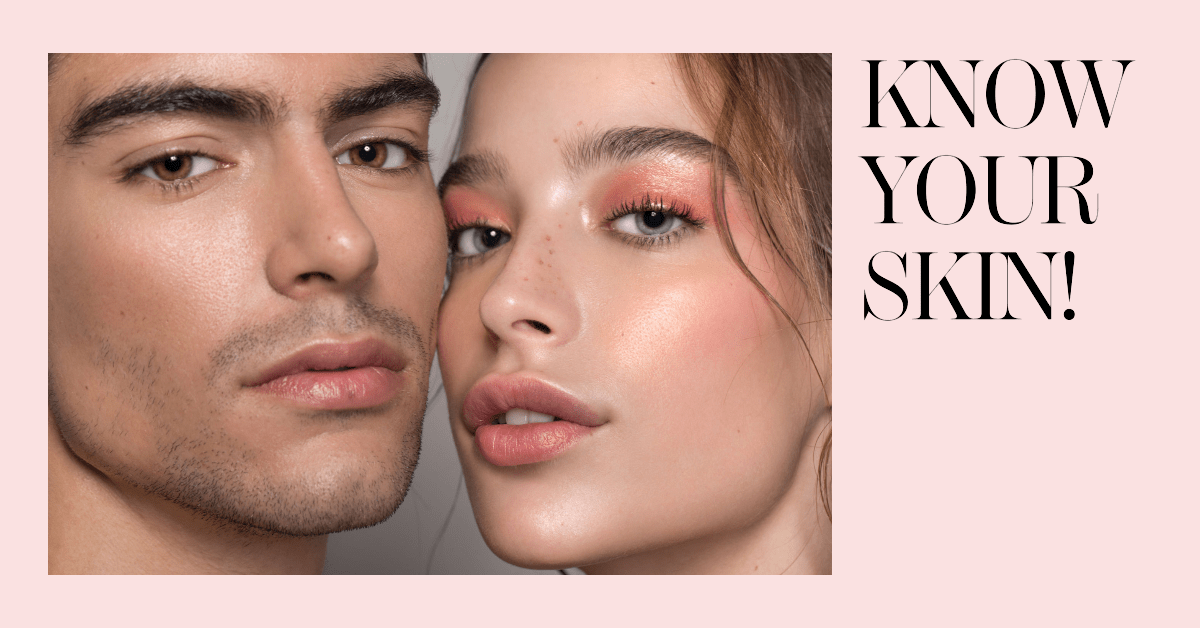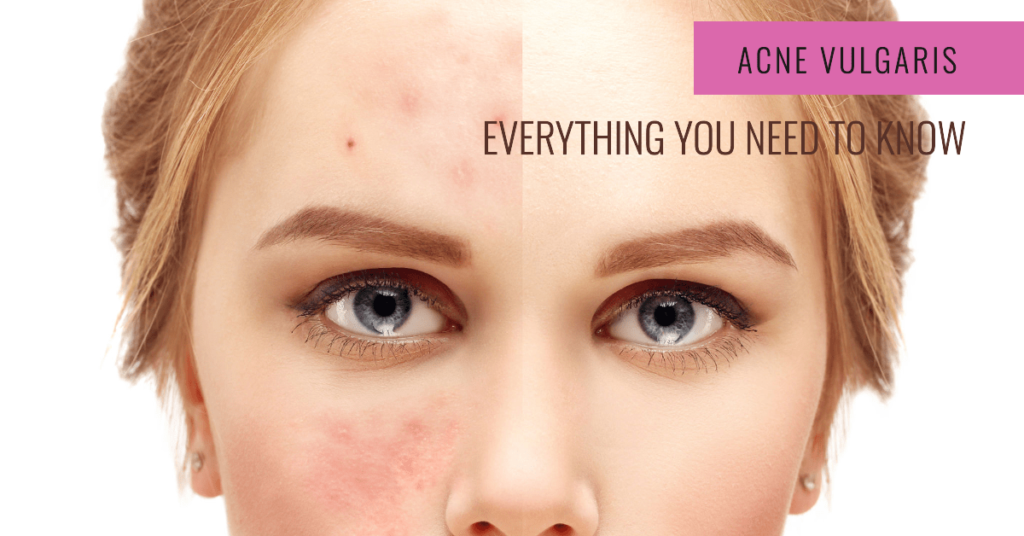Our Skin is the largest organ of our body acting as a protective barrier and making us look as beautiful as we do. It plays a major role by regulating our body temperature and providing protection against environmental factors such as sun rays, germs, and toxic substances, etc. Our Skin is also responsible for storing fat, enabling sensation, and producing Vitamin-D when comes in contact with the Sun at suitable hours. There are countless products and self care routines however, rarely any routine or the product made for all skin types, therefore, knowing your Skin Type should be your utmost priority for a healthy skin.
Context & Brief Introduction to The Skin
Skin, a four-letter word, ironically, it is as complex as simple it seems. It is your identity. It is what people see first when they see you. It is what people feel first when they touch you, hug your or shake hands with you.
Regardless of its utmost importance in our lives, we fail to understand it, take care of it and unfortunately, most of us struggle with keeping it healthy.
“Skin is the largest living organ of our Body and unlike hair, Healthy Skin can repair and astonishingly, replace itself every 28 days.”
Today, having put in hours in researching this organ in context of beauty & personal care and leveraging my own expertise on the topic, I’ve made an attempt to help you understand The Skin with technical and not so technical words.
I’ve tried explaining our skin in simplest words possible. As we move forward with this article, you’ll understand the rationale behind each skin type, science-based approach to determine the skin type and more importantly, you’ll find a practical guide which will help you achieve a healthy skin and maintain it for years.
Anatomy & Physiology of The Skin
Primarily our skin is divided into three main layers; epidermis, dermis and hypodermis. Combined these three, makes up our skin, however, within these three main layers, there are various glands, cells and nerves etc. which are responsible for playing supportive role to the skin and making skin, The Skin as a whole.
To keep it simple, skin can be structured primarily into three layers

1. Epidermis (Outermost Layer):
This is the most superficial & outermost layer of our Skin that contains cells which produces melanin, a substance responsible for the color of our skin, eyes, and hair. The more melanin our skin produces, darker our Skin, Hair and Eyes will be. Epidermis is replaced every 28-30 days.
2. Dermis (Middle layer):
Dermis is the middle layer, sandwiched between epidermis and hypodermis. This middle layer is important because it consist of the followings:
- Sebaceous Glands: Responsible for production or secretion of Sebum (oil) which further moisturizes and protects our skin. However, overproduction of this substance may result into an Oily Skin Type.
- Sensory Nerve Endings: These nerve endings enable you to feel sensations like heat, cold, pain, and pleasure which ultimately provide protection from various environmental factors.
- Hair Follicles: These hair follicles are mainly responsible for producing hair on our body except for our palm and the soles of our feet.
- Sweat Glands: Responsible for producing sweat and maintaining our body temperature.
3. Hypodermis (Bottom Layer):
Hypodermis, also known as subcutaneous tissue is the bottom layer of your skin directly connected to your dermis which plays many roles in your body such as storing energy and acting as shock absorber to protect your skin. This is the layer which starts to decrease and eventually sags as you age.
Why Do You Have the Skin Type That You Have? Explained.
In simplest words, the amount of sebum (Oil) produced by our Skin defines which skin type we are. Knowing our skin type can help us pick the right skincare routine as well as the product. Most people casually try out new products without understanding their type which results in major disappointment in product, its effectiveness and more importantly, it hit our morale which ultimately affect our self-esteem; therefore, it becomes very important to figure out which skin type we are, and which products or ingredients are made for us. Below I’ve explained the most common skin types, it’s likely that you’ll have one of these skin types.

1. Normal Skin Type: Sebum Production is Optimized:
It’s neither too dry, nor too oily, just the right amount of sebum is produced by sebaceous glands. This skin type is considered most healthy, and it’s also desired by most of us. This skin type is also known for having a smooth texture, minimal pores and no to minimal sensitivity to environmental factors.
Quick Tip: Maintain its balance with a gentle cleanser, a light moisturizer, and regular use of sunscreen.
2. Dry Skin Type: Sebum Production is less than necessary:
Since this skin type produces less sebum than necessary, the skin appears dry with minimal to no moisture. It may also feel tight, especially after cleansing. Lack of moisture may also make your skin sensitive to flaking, itching and premature aging etc.
Quick Tip: Hydrate with a gentle cleanser, a richer moisturizer, and products containing hyaluronic acid. Avoid hot showers and harsh soaps.
3. Oily Skin Type: Sebum Product is more than necessary:
Usually, sebum is a good however if it’s being produced more than it’s needed by our skin, it may result into an oily skin type with larger pores, making our skin sensitive to blackheads, whiteheads, pimples and acne etc. due to excess oil clogging the pores. On the bright site, oily skin tends to age at a slower rate and has natural protection against fine lines and wrinkles.
Quick Tip: Use an oil-free cleanser, a light, non-comedogenic moisturizer, and an oil-free sunscreen. Exfoliate regularly but gently to avoid irritation.
4. Combination skin Type:
As the name suggests, it corresponds to a complex skin where the different types previously described coexist on different areas of body or face. Signs of combination skin include, dry skin in some areas and oily in other such as your T-Zones (forehead, nose and chin etc.)
Unlike other skin types explained above, this skin type may be a bit tricky to take care of because, the one routine that works for an oily skin, may not provide the similar results and the other routine that works for dry skin may pose challenges reason being, the complexity created by different skin types coexisting together.
Quick Tip: Use products which are formulated for combination skin and Cleanse your face twice daily to remove excess oil and impurities without over-drying or stripping the skin.
5. The Sensitive Skin:
A skin type said to be sensitive when it is easily irritated by vrous factors such as exposure to sun rays, which may cause redness & irritation, certain chemicals used in skincare products, season, food, life style; specifically stress etc. Managing sensitive skin is challenging but possible. It can be taken care of by identifying the triggers arising from different factors explained above.
Quick Tip: Focus on identifying the triggers for your skin and read more about the ingredients of a product before applying on the skin.
Do You Know Your Skin Type? Let’s Help You Determine It.
The skin type can be classified based on various criteria such as skin aging sighs, sensitivity, skin color and sun reaction etc. however, we are going to stay focused on determining the skin type based on pigmentation i.e. sebum production. Why? Because a comprehensive study, conducted with 52,862 people, supports this reason as shown below with the data from the research. (More on this under “The Baumann Skin-Type Indicator” method). Information provided about skin should give you enough clarity on what determines your skin types and how knowing your skin type pays off.
To help you determine your skin type, below I’ve shared two approaches; simple approach and the comprehensive approach. Former approach is easy and convenient however, later is extensive but more reliable and accurate.
Simple Approach to Determine Skin Type:
Bare Faced Method: Based on Sebum Production
This is one of the easiest approach which determines your skin type by helping you identify the amount of sebum produced by your skin. In order to determine your skin type using this approach, wash your face thoroughly with a cleanser and let it dry naturally for roughly thirty minutes and then examine your face, cheeks, chin and forehead for any shine. If your skin feels tight, your skin is likely dry. If there is noticeable shine on your nose and forehead, your skin is mostly likely normal/combination. If there is shine on your cheeks in addition to your forehead and nose, you most likely have oily skin.
The Blotting Sheet Method: Based on Sebum Production
This is one of the easiest approaches out there is which can help you determine your skin type. All you have to do is pat a bottling paper on presume to be affected areas of your face and hold the sheet up to the light to see the amount of oil visible on the sheet. If the sheet picked up little to no oil, you most likely have dry skin. If the blotting sheet reveals oil from the forehead and nose areas, your skin is normal/combination. Finally, if the blotting paper is saturated with oil, it is extremely likely that you have oily skin.
Comprehensive Approach to Determining Skin Type:
The Baumann Skin-Type Indicator (Based on: HSPE)
The Baumann Skin Type Indicator (BSTI) is one of the most reliable methods developed by dermatology professor Leslie Baumann to categorize skin types into 16 distinct skin types. This is based on Hydration, Sensitivity, Pigmentation, and Elasticity (HSPE) and rely on a self-completion. A is a validated Quiz. To give you an idea of how widely accepted this approach is, I’ve summarized the study that was conducted to check the reliability of this approach.
| Skin Type | People | Result |
|---|---|---|
| Oily Skin Type | 34,203 | 65% |
| Dry Skin Type | 18,659 | 35% |
| Total | 52,862 | 100% |
Results of the Study
The BSTI questionnaire was tested over 200,000 people across the world belonging to different race, ethnicities, geographic locations and of various ages. In this study, 52,862 patients were survived & asked to fill out the questionnaire with Doctor’s supervision and without Doctor’s Supervision. There was slight & negligible difference in data of patience who got surveyed with supervision and those who were surveyed without supervision. At the end, it was concluded that the supervision of the Doctor was not needed and nor it was having any impact on accuracy of the data. In short, it could be done independently and still get the same results.
Conclusion:
Congratulations!! You made it till the end. We talked about Skin in great details and discussed various aspects such as skin types, role of sebum, structure of skin, functions of dermis, The Hair Follicles, and the list goes on. Keeping in mind all the knowledge that you have now about your skin, it’s important that you reevaluate your skincare routine and once satisfied, be patient and stick to it for a while to see the results and then adjust accordingly.
Lastly, even though skincare products are formulated to cater each skin type separately, individual skin’s reaction may react differently therefore, it’s essential to patch-test new products and consult with a dermatologist if you have specific skin concerns or conditions.
If you liked the article or even better, identified gap which can improve this piece of writing, you are more than welcome to share your suggestion in the comment section or reach out to us thorough our contact page.




